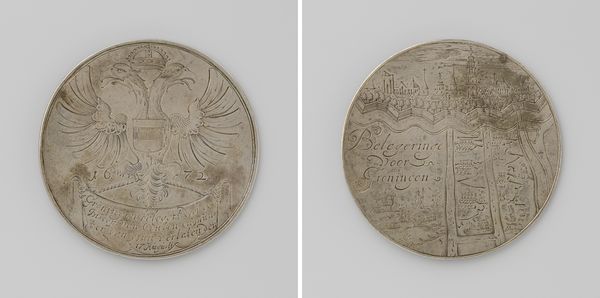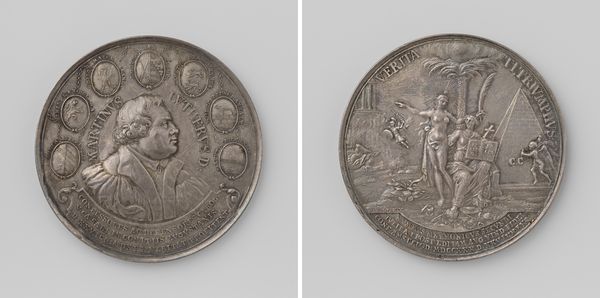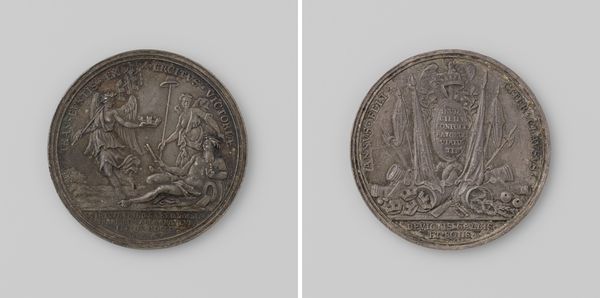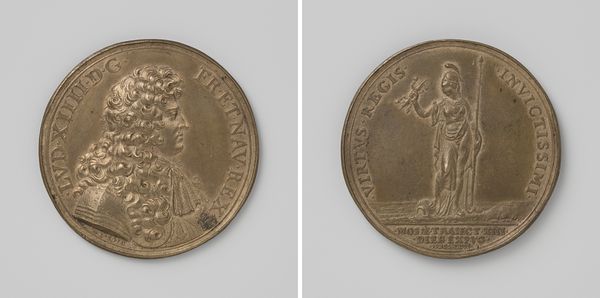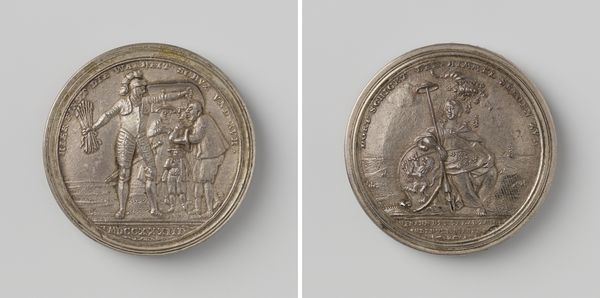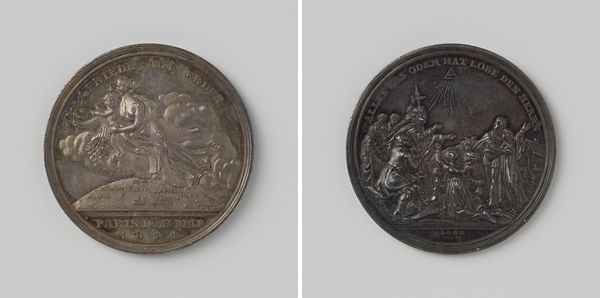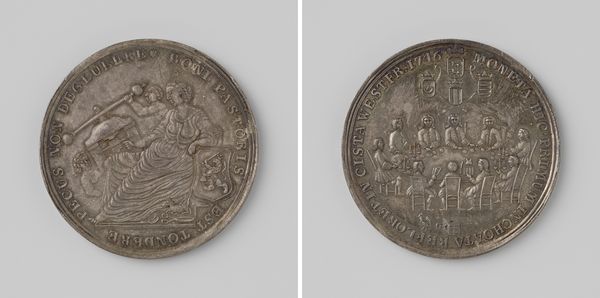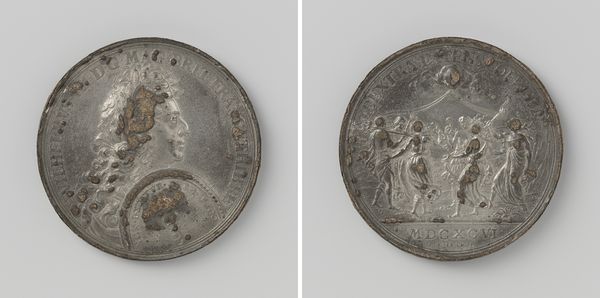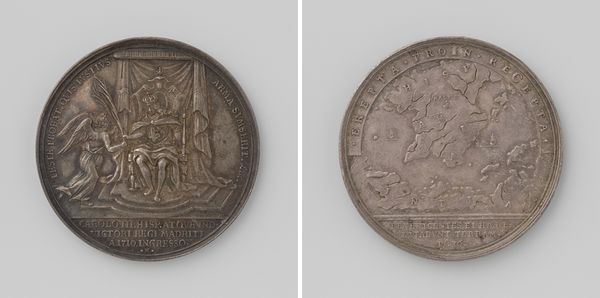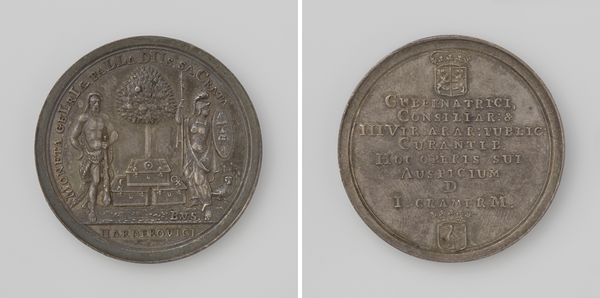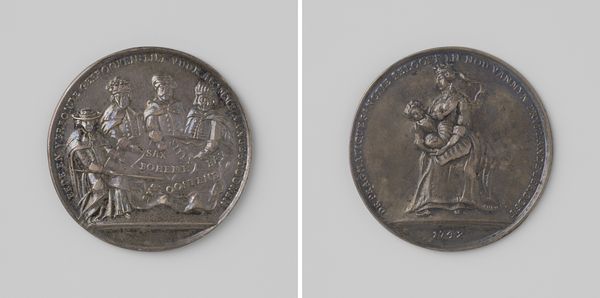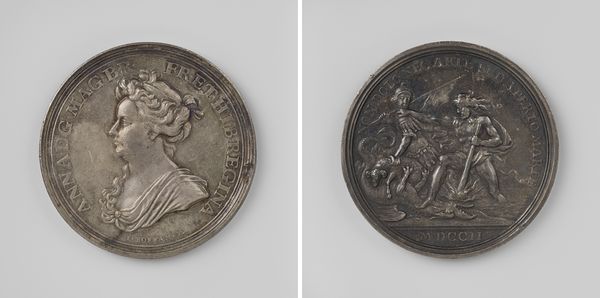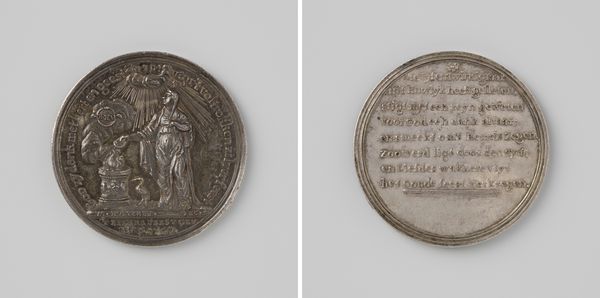
Honderdste planting van de meiboom te 's-Gravenhage, penning vereerd aan de onderofficieren en rotsgezellen van het Groene Vendel 1734
0:00
0:00
carving, metal, relief, sculpture
#
carving
#
baroque
#
metal
#
sculpture
#
relief
#
sculpture
#
carved
Dimensions: diameter 5.5 cm, weight 61.52 gr
Copyright: Rijks Museum: Open Domain
Curator: The texture! One can almost feel the cold, smooth metal just by looking at this digital image. I'm struck by the precision of the relief. Editor: Precisely! We are observing a medal from the year 1734. It was crafted by Martin Holtzhey. Its full title is, “Centennial Planting of the Maypole in The Hague: Medal presented to the non-commissioned officers and companion rocks of the Green Faction." Curator: “Companion rocks?” Intriguing nomenclature aside, it is easy to admire the arrangement of emblems. We have heraldic shields and scrolling ribbons all interwoven in such a way as to imply meaning beyond the literal depictions. It gives such importance to the medal. Editor: Absolutely. Holtzhey crafted this medal to commemorate the 100th anniversary of the planting of the maypole in The Hague by a specific civic militia group. The planting was a ceremonial event, rich with social and political implications, underscoring the city's identity. These types of medals became vehicles for solidifying collective memory and allegiance. Curator: The details in the central heraldry and the figures surrounding it are astounding. They feel classically inspired. There are so many little lines that shape the visual experience and give the medal some added depth and gravity, no matter how big the object actually is. Editor: Civic identity during this period was intrinsically linked with displays of symbolic power. The "Green Faction" planting their maypole after a century signals the endurance of traditions that were so politically important during a period of societal transition. The medal transforms a transient ceremony into a timeless monument. Curator: Considering that civic and historical context certainly alters one’s perception. Initially, my attraction stemmed purely from the skillful carving. Now, understanding its use as a commemorative object changes my understanding entirely. Editor: Indeed. Art objects are so multifaceted. By considering their form, purpose and how they played a public role during its time of manufacture, one is granted a new lens through which to view even the most expertly rendered object. Curator: That shift from the aesthetic to the historical narrative—illuminates fresh elements within the design. I will always look to composition and materiality first. Editor: While socio-political forces guide my appreciation, each element—style, material, form—enhances our awareness, deepening one's respect for Holtzhey’s ability.
Comments
No comments
Be the first to comment and join the conversation on the ultimate creative platform.
